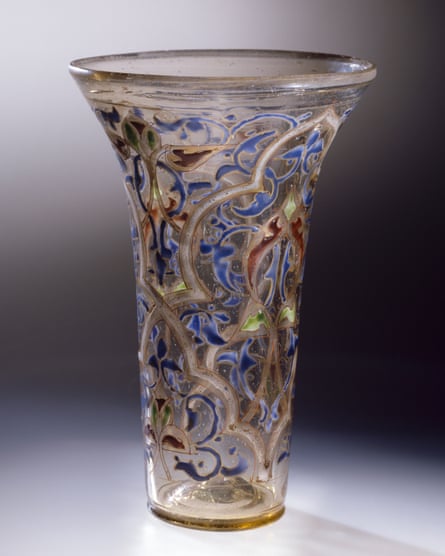A new exhibition in Paris aims to show how England in the middle ages was very much part of Europe’s dynamic art, architectural, trade and culture scene between AD1000 and AD1500.
Organisers said the event would discredit the “popular perception” – mainly across the Channel – that medieval England was “primitive and barbaric” while France and parts of Europe enjoyed a gothic zenith.
James Robinson, the exhibition curator who is keeper of decorative art and sculpture at London’s V&A, said there had been a “reassessment” of England’s contribution to European art in the middle ages over the past half a century.
“I’d like to blow apart the popular perception that the middle ages were all about pestilence, the Black Death and religious repression, and demonstrate the artistic and technical excellence that was evident. When you look at the art works in this exhibition you will see some of the true masterpieces of the age,” Robinson said.
Unfortunately, while France and other European countries largely preserved their medieval treasures, England’s artistic heritage was “systematically and ruthlessly decimated” by the 16th-century Reformation and the revolution led by Oliver Cromwell in the 1640s, he said.
“This misunderstanding about the supremacy of French culture is because so much of the evidence was destroyed by us … nowhere [in England] was left untouched by the Reformation. While continental Europe tended to retain its church treasuries, ours were dismantled and destroyed.”
Gothic style, most spectacularly expressed in architecture, was the predominant art form in 13th-15th century Europe and saw the creation of breathtaking cathedrals. As well as religious furniture and reliquaries, the period saw a boom in paintings, illuminated manuscripts, sculptures, tapestries and intricate embroideries.
The English Reformation, after Henry VIII wrested the Church of England away from the authority of the pope and Catholic church in Rome, saw the king’s chief minister, Thomas Cromwell, close down the country’s monasteries, confiscating their riches and in many cases dismantling the buildings.

“All things of value were spoiled, plucked away or utterly defaced … and it seemed every person was intent upon filching and spoiling what he could,” wrote Michael Sherbrook, the 16th-century rector of Wickersley near Roche Abbey, in South Yorkshire, whose father had witnessed the spoliation when the local monks surrendered the abbey to the king’s commissioners in 1538.
“As a result, France became the canon of gothic arts and architecture, but what is often overlooked is that the English were equally competent. If you look at Lincoln or Salisbury cathedrals, they are up there with the best gothic architecture anywhere,” Robinson said.
Among the exhibits at the Paris exhibition that opens on Friday at the Al Thani Collection in the Hôtel de la Marine, are rare treasures that escaped the 16th and 17th century pillage and destruction, including the Gloucester Candlestick, the Becket Casket, the Clare Chasuble, the Luck of Edenhall and the Syon Cope.
Marie Lavandier, the president of France’s National Monuments Centre, said: “The exhibition is astonishing as it highlights the extraordinary richness of the artistic exchanges that united England with continental Europe in medieval times.
after newsletter promotion

“Despite its insularity, England was far from an isolated kingdom. This period of art, somewhat neglected on this side of the Channel, must no longer be overlooked. In addition to its intrinsic qualities, it testifies to the rich and complex relationship that our two countries have maintained for centuries.”
Robinson says language – highlighted in the title of the exhibition – was part of the international exchange with Europe in the middle ages.
“We know from textual sources and from the material culture there was a fluency in French at the highest levels of English society that percolated down to a degree but not of course to the lower orders of society that spoke English.”
He added: “At this moment when we are interrogating ourselves about our relationship with Europe, what the exhibition is also demonstrating is that we have always been closely tied to it in terms of commerce and diplomatic relationships.”
Medieval Treasures: When the English Spoke French runs from 30 June to 22 October at the Hôtel de la Marine, 2 Place de la Concorde, 75008, Paris

